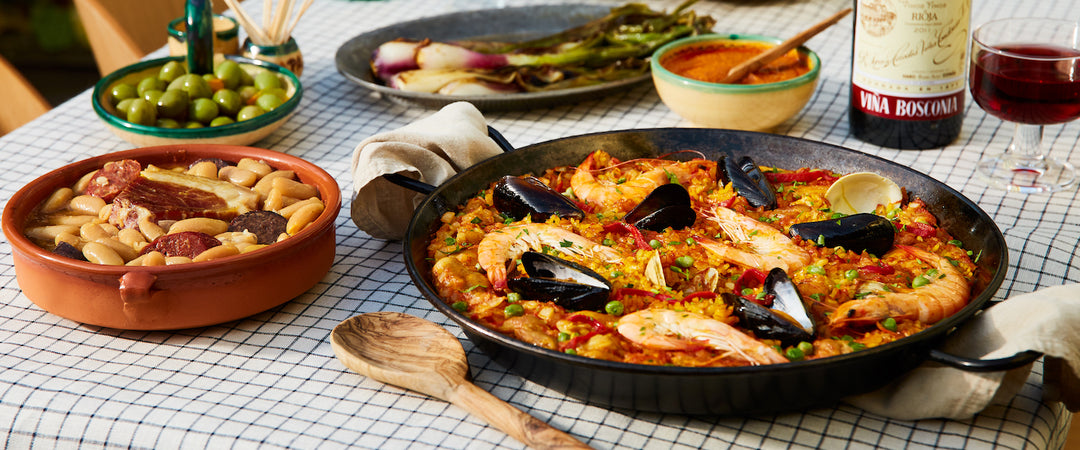November 2025 Tinto Club
 
|
Francisco Barona 2022 Regular Price: $69.99
Club Price: $59.49
|
Francisco Barona didn’t start life as a winery wunderkind. In fact, he failed his high-school science classes. Coming from a grape growing family, working in with was the default, but it took working harvest labor in France (as a cocoon) before emerging as the butterfly genius whose name graces the front and back of the bottle. It was in the vineyards of Bordeaux, lugging buckets and stumbling toward understanding, that someone recognized his instinct for vine-work, and paid for his BTS VO and later DNO degrees. By the time he returned to Roa de Duero and planted his flag across 45 hectares of old field-blend vineyards, he knew what he was after: authenticity, utility, the earth with its rhythm — not trend.
The 2022 vintage in the Ribera del Duero region was, as Barona puts it, “Mediterranean” in spirit — a long, hot, dry run that tested vines and vintners alike. With well-below average rainfall and temperatures above the norm, the vines that had deep roots and wise exposures showed their mettle. Barona’s vineyards (planted between 1908 and 1948 in Roa, Anguix, La Aguilera and Pedrosa de Duero) sits on calcareous clay, sand and gravel soils, exposed to the plateau’s blitz of sun and the swelling radiance of stone-heated nights. The result: small berries, dense skins, generous colour, and firm, glossy tannins.
Barona farms his land with humility — no chemical fertilizers, no irrigation, no artificial shortcuts. He co-ferments the Tinto Fino (Tempranillo) with the field-blend cast: Garnacha, Bobal, Jaén, and the pale whisper of Albillo Real. The vines live mosaic, so the fermentation reflects mosaic: each parcel bringing its voice, every grape in the same vat. For 2022 he also leaned into 20 % whole-bunch inclusion, pushing texture, pushing tension. New French barriques coddle the wine for sixteen months, yet the wood stays in the background and let the vineyards speak.
On tasting, the 2022 vintage delivers power with poise. The glass shows a deep purplish-ruby hue, the scent list beginning with bramble and plum, edged with sweet spice and a hint of the dusty stone where the vines root. The palate feels layered: ripe black fruit kissed by graphite, full and yet agile, tannins firm but polished, a savory counter-note lingering behind the fruit. Think cured leather, humus and crushed river stone. This is Barona’s “liquid red velvet” turned up a notch. While Francisco Barona the man may be a tad loud and brash in his presentations, Francisco Barona the wine has a quiet smooth authority.
As for pairing with food, keep in mind that this is no dainty wine. It asks for something hearty: roasted lamb shoulder with rosemary, a wild-mushroom ragù over hand-cut pappardelle (go see Pasta Supply Co. for a fixin' or both of those), or a holiday roast turkey that needs substance beneath gravy. The ripeness and richness sit beautifully with fat and savor, while there is acidity and fine tannin to keep it fresh. Over the next decade or more, this wine will grow in the cellar. This one sports a uniquely Spanish red wine quality: it already offers intense pleasure today while being cellar worthy for another decade (easily).
In the end, what stands out is this: Barona’s vineyards were tested by fire in 2022, and he didn’t shy away. He set out deliberately to make a wine that reflected a place under pressure — old vines, mixed varieties, co-ferment, high altitude, plateau wind and sun. It’s not a showy wine, but it has presence. It isn’t elegant in the soft-spoken way of some modern reds, but it has a muscular edge, an honesty born of marrow. And simply put in maybe more economic terms, after recent tastings I emerged with the thought that this is Vega Sicilia level wine at a steep discount.
 |
Bodegas Illurce 2022 Regular Price: $16.99
Club Price: $14.44
|
I visited Bodegas y Viñedos Ilurce in the fall of 2024, when the Graciano vines were heavy with fruit. Dark juicy clusters adorned each bush vine and seemed to radiate color even in the soft Riojan light. The family’s vineyards stretch from the edge of Alfaro in what was once called Rioja Baja, now officially Rioja Oriental. On the drive from winery to vineyard, a look out the window for just twenty minutes made the abundance of the region clear. Pears, apples, berries, even pork and chorizo factories line the roads. Rioja Oriental isn’t just a grape basket — it’s a literal horn of plenty.
Walking through the vineyards with the winemaker, we stopped often to inspect leaves ragged from the work of African grasshoppers, a new and vicious plague he blamed on the warming climate. They can strip a canopy in days, sometimes hours — not only the leaves but the fruit itself — leaving vines gasping just before harvest. He spoke about fighting them tooth and nail, sometimes with nothing more than vigilance and timing, and using pheromones and natural predators. Yet in spite of their onslaught, the fruit that season was beautiful: resilient clusters of Graciano, bursting with juice and color, tasting of plum skin and dusty heat.
Later, at the family’s modest winery, we drank their Rio Madre Graciano alongside thin pork cutlets grilled over grape wood in a traditional barilla — that ingenious flippable clamshell grill found all over Spain. The wine was dense and gleaming in the glass, with a jammy, red-black core that smelled of smoke and sun-dried fruit. On the palate, it carried something more unusual — a texture that reminded me of burlap and olive oil, earthy and tactile, as though the fruit had absorbed the scent of the soil itself. It’s the kind of description that sounds off-putting until you taste it, when it suddenly makes perfect sense: deep, smoky, and a little wild, yet harmonious in a way that only Rioja’s southern heat can create.
This Graciano comes from vines rooted in the alluvial soils of the Ebro’s southern reaches, mixed with red clay and streaked with iron. The grapes are hand-harvested, destemmed but left whole, and fermented in concrete and stainless steel before six months of aging in used French barrels that lend texture but no overt oak flavor. The result is both rustic and precise — a Rioja that refuses to imitate the north’s Tempranillo elegance and instead celebrates its own muscular, sun-warmed character.
Rio Madre is a wine that insists on being shared. The jamminess and smoke make it a natural companion to pork and grilled vegetables, but it’s also perfectly timed for the holidays. It’s the kind of red that brings depth to roast turkey and gravy, the kind that feels as good in the glass as it smells from the kitchen. Unlike the wine we paired it with, Francisco Barona's 2022 masterpiece, which is suave and elegant, the Illurce Graciano is a simple, honest, rustic wine. Dark, fruity, 14.5% alcohol, and proud of the fruitful plenty that Rioja Oriental produces. And maybe wishing in another life it would get a chance at being a port ;-)
There’s something about Ilurce’s wines that stays with you. It is almost as if the mixed agriculture of the region is reflected in the "agricultural simplicity" of the wine. It is not the most subtle and suave of wines, but after having been wrestled from the jaws of grasshoppers, it speaks with a basic honesty. Rioja Oriental has always lived close to the ground: orchards, vegetables, sausage, and now these fierce little berries of Graciano. It’s a place where you can taste the land’s and a farmer's toughness, simplicity and honesty in the wine. And in the deep dark red glow of Rio Madre, all of those qualities sure add up to a virtue.



